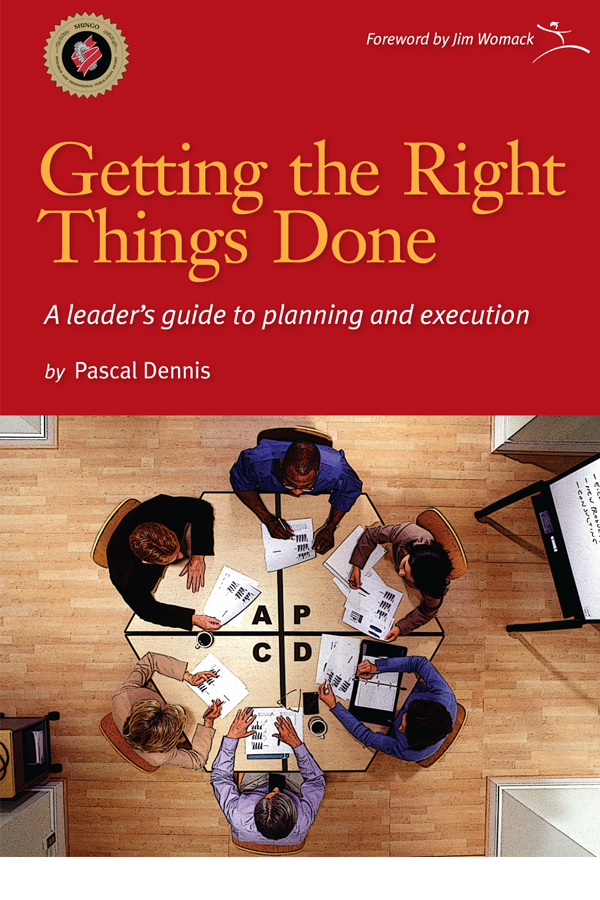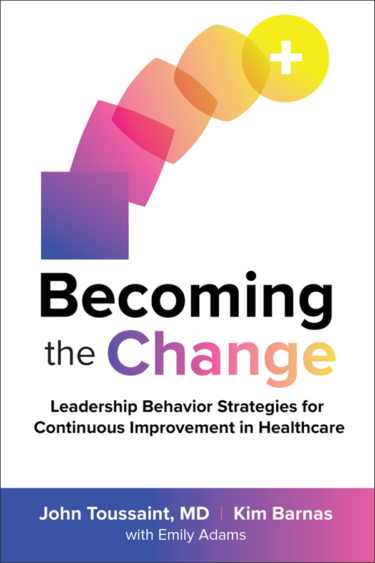Shingo Research and Professional Publication Award recipient
For companies to be competitive, leaders must engage people at all levels in order to focus their energy and enable them to apply lean principles to everything they do. Strategy deployment, called hoshin kanri by Toyota and also known as policy deployment, has proven to be the most effective process for meeting this ongoing challenge.
In his book, Getting the Right Things Done, Pascal Dennis outlines the nuts and bolts of strategy deployment, answering two tough questions that ultimately can make or break a company’s lean transformation:
- What kind of planning system is required to inspire meaningful company-wide continuous improvement?
- How might we change existing mental models that do not support a culture of continuous improvement?
Getting the Right Things Done demonstrates how strategy deployment can help leaders harness the full power of Lean.
Organization leaders at all levels and the management teams who are responsible for strategy deployment will find this book especially insightful. It tells the story of a fictional (yet very real) midsized company, Atlas Industries, that needs to dramatically improve to compete with emerging rivals and meet new customer demands.
Getting the Right Things Done chronicles the journey of the company and its President and COO, an experienced lean leader who was hired five years ago to steer Atlas in the right direction. While Atlas had already applied some basic lean principles, it had not really connected the people and business processes so that the company could dramatically improve. Atlas’ challenge: “Something was missing: a way of focusing and aligning the efforts of good people, and a delivery system, something that would direct the tools to the right places.” Enter strategy deployment.
The book is designed to provide readers with a framework for understanding the key components of strategy deployment: agreeing on the company’s “True North,” working within the PDCA cycle, getting consensus through “catchball,” the deployment leader concept and A3 thinking. It links action to theory and reminds us that lean tools – like value-stream maps, kaizen events, and 5S – are only the means to an end, not ends in themselves.
Like Freddy and Michael Ballé’s outstanding lean novel, The Gold Mine, the book tells a realistic, compelling story. Like LEI’s very successful and practical workbook series, it also takes a step-by-step instructional approach to the strategy deployment process. It features a wealth of visual tools including filled-in charts and graphs at every step in the process, dashboards, detailed A3s, and blank templates. Through this unique combination, Getting the Right Things Done balances the human and technical dimensions of making strategy deployment a vital part of any company’s daily culture.
Chapter Downloads:





Reviews
There are no reviews yet.